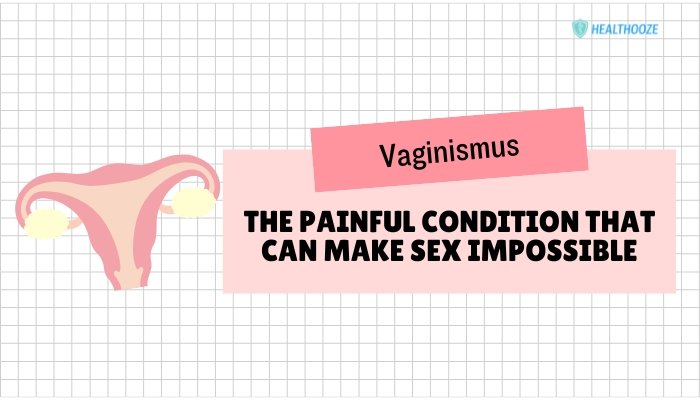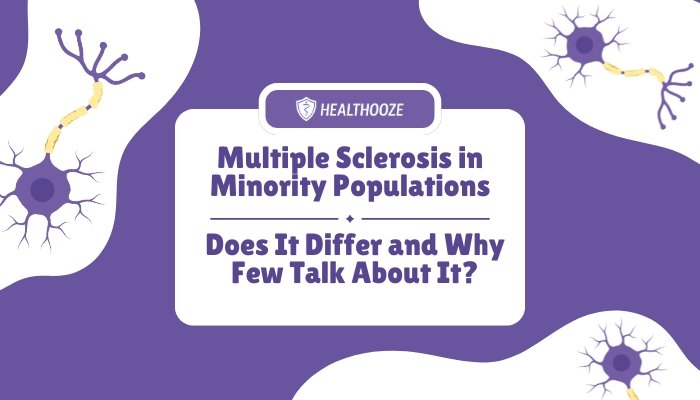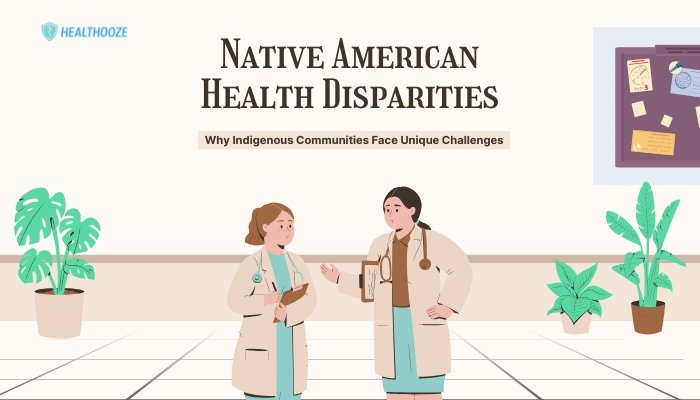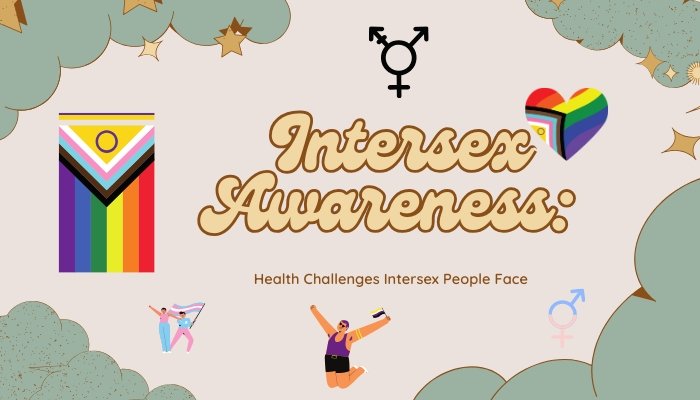Introduction
Black maternal mortality refers to the higher rate of deaths related to pregnancy or childbirth among Black women. This issue has received greater attention in recent years due to several policy initiatives, community advocacy, and research efforts.
Despite medical advances, the maternal mortality rate in certain populations continues to outpace national averages. Black women face a markedly increased risk of complications and deaths during and after pregnancy compared to other racial groups.
Researchers have explored the social, biological, and healthcare-related factors that contribute to this disparity. These factors include chronic health conditions, inadequate prenatal care, systemic discrimination, and implicit bias within clinical settings.
This article examines these variables to highlight why Black women experience higher rates of maternal mortality. It also discusses potential interventions and policy measures that might reduce risks and improve health outcomes for pregnant Black women.
Understanding the Current State of Black Maternal Mortality
Key Statistics and Trends
Public health data in the United States indicates that Black women die from pregnancy-related causes at rates far higher than those of other racial and ethnic groups. These figures point to a consistent pattern that persists across income levels, education statuses, and geographical locations. While progress has been made in some healthcare sectors to reduce maternal deaths, racial gaps in outcomes remain substantial.
Researchers note that some Black women experience pregnancy-related complications, including hemorrhage, preeclampsia, and cardiomyopathy, at greater frequency and severity. Furthermore, a lack of consistent postpartum follow-up often contributes to adverse outcomes. Many severe complications, such as stroke or infections, can occur weeks after childbirth, underscoring the importance of comprehensive maternal care throughout the entire perinatal period.
Recognizing Disparities Beyond Income and Education
Although socioeconomic factors and educational attainment can influence a pregnant woman’s health, disparities in maternal death rates have appeared among Black women of various economic and academic backgrounds. This indicates that additional factors beyond personal wealth or higher education are at play. Even well-resourced Black women can experience adverse outcomes, pointing to broader systemic issues that transcend class lines.
Acknowledging that income level alone does not fully explain differences in maternal survival rates underscores the influence of social determinants of health, healthcare biases, and the chronic stress that may affect Black women.
Key Risk Factors for Higher Mortality Among Black Women
Chronic Health Conditions
Many Black women enter pregnancy with pre-existing medical conditions that increase their risk of complications. These conditions include:
- Hypertension (chronic high blood pressure)
- Diabetes
- Obesity
- Kidney disease
Long-term or unmanaged hypertension and diabetes can lead to more serious events such as preeclampsia or eclampsia, which can cause seizures, stroke, or organ failure. Additionally, obesity and kidney disease can complicate pregnancy and limit healthcare providers’ options for a safe delivery. Early detection and appropriate management of these conditions are essential for improving outcomes.
Healthcare Access and Prenatal Care
In many communities, Black women are less likely to have consistent access to high-quality prenatal care. Prenatal visits can detect issues such as elevated blood pressure, abnormal glucose levels, and other risks before they become severe. When these appointments are missed or delayed, the chance of complications increases. Factors that disrupt access to prenatal care include:
- Transportation difficulties
- Limited time off from work
- Gaps in health insurance coverage
- Shortage of local obstetric providers
Expanding healthcare coverage for pregnant women, offering flexible clinic hours, and strengthening community-based care can help address these gaps.
Provider Bias and Discrimination
Implicit or explicit bias within healthcare settings can affect clinical decision-making and patient-provider interactions. Black women often report that their pain or symptoms are not taken seriously, resulting in delayed intervention. This can lead to severe complications remaining undiagnosed or undertreated. Examples of bias include:
- Dismissing complaints of pain during labor
- Downplaying concerns about abnormal symptoms in postpartum follow-up
- Insufficient communication about treatment options and risks
Recognizing and mitigating bias is crucial for improving maternal health. Training healthcare teams to listen to patients, respect cultural preferences, and provide thorough explanations fosters better outcomes.
Social Determinants of Health
Social determinants of health are environmental and community factors that shape a person’s well-being. Many Black women live in areas with fewer quality healthcare providers, limited public transportation, or under-resourced community services. Social determinants that elevate maternal risks include:
- Inadequate nutrition due to food deserts
- Exposure to high levels of environmental pollutants
- Chronic stress from discrimination
- Instability in housing or employment
These conditions can lead to long-term inflammatory responses, making it more difficult for a pregnant person to remain healthy. Addressing these core issues requires policy reforms, community investment, and improved public health infrastructure.
Biological and Genetic Considerations
While social factors predominantly explain many disparities, certain biological and genetic factors can also influence pregnancy outcomes. Some studies suggest that a history of conditions such as fibroids or genetic predispositions to cardiovascular disease may be more prevalent among Black women. When combined with existing medical or social issues, these genetic risks can intensify the overall burden on maternal health.
It is important, however, not to overemphasize genetic explanations. Social and healthcare-related factors remain the primary drivers, and focusing too heavily on genetics can shift attention away from systemic healthcare issues that can be reformed to improve patient outcomes.
Impact on Healthcare Delivery and Quality of Care
Clinical Assessment and Response
Overworked or understaffed healthcare facilities often struggle to provide personalized care, especially if they serve a high number of low-income patients. In some settings, guidelines for managing obstetric emergencies may not be consistently followed, or necessary diagnostic tools might be lacking. For instance, a delay in diagnosing postpartum hemorrhage can be critical. If a patient’s concerns are not addressed promptly, a manageable issue can escalate into an emergency.
Communication Gaps
Effective communication plays a significant role in timely obstetric care. When patients feel they are not being heard or respected, they may refrain from voicing concerns or asking questions. Communication gaps can be worsened by:
- Language barriers
- Cultural differences
- Limited time during appointments
Fostering open communication requires healthcare teams to listen intently, encourage questions, and verify the patient’s understanding of treatment. Some clinics employ patient navigators or community health workers to bridge these gaps, improving follow-up care and adherence to medical recommendations.
Systemic Barriers to Equitable Maternal Health
Historical Distrust and Legacy of Inequality
Historical events have led to distrust of the medical system in some Black communities. Unethical medical studies and substandard care in the past have created lasting skepticism about conventional healthcare. This legacy may discourage some pregnant women from seeking care early or continuing consistent prenatal visits. Earning trust requires a commitment to transparency, accountability, and culturally competent care at the institutional level.
Insurance and Coverage Challenges
Lack of continuous health insurance coverage can interrupt prenatal and postpartum care. Even when pregnant women qualify for certain coverage, administrative complexities may cause delays. Some lose insurance after giving birth, limiting their ability to attend postpartum visits or manage ongoing conditions. Policy interventions that extend Medicaid coverage beyond the immediate postpartum period can alleviate this barrier and reduce complications.
Rural and Underserved Areas
Maternity care deserts exist in rural regions or underserved urban zones. Residents of these areas may need to drive long distances to the nearest obstetric facility. This limitation can delay timely care during obstetric emergencies, such as premature labor or signs of hypertension. Telemedicine initiatives and incentivizing healthcare professionals to work in underserved areas can partially close these gaps.
Chronic Stress and Psychosocial Factors
Persistent stress related to discrimination, financial hardship, or community violence can damage the body’s systems over time. Researchers refer to this as “weathering,” describing how chronic exposure to adversity accelerates health deterioration. Stress-induced hormonal changes can contribute to high blood pressure, inflammation, and preterm labor.
Additionally, mental health conditions such as depression and anxiety, if unaddressed, can affect prenatal behaviors. A woman experiencing depression may skip medical appointments, struggle with healthy eating, or delay calling a provider when warning signs appear. Ensuring access to mental health services, along with social support programs, is fundamental for improving maternal well-being.
The Role of Quality Prenatal Care and Early Intervention
Screening and Monitoring
Quality prenatal care involves regular screening for health indicators such as:
- Blood pressure
- Blood glucose
- Protein levels in urine
- Fetal growth markers
Early detection of abnormalities allows providers to adjust treatment plans or recommend specialized care. In particular, screening for gestational diabetes and preeclampsia can significantly reduce complications. For instance, managing gestational diabetes with dietary adjustments or insulin can prevent both maternal and fetal complications, while controlling elevated blood pressure can reduce the risk of stroke and organ damage.
Personalized Care Plans
Many Black women benefit from care plans that address both medical and social needs. Examples include:
- Nutritional counseling for healthy weight gain
- Mental health support to address depression or anxiety
- Regular tracking of blood pressure at home
- Access to educational programs on infant care and lactation
Integration of such services within community clinics and hospital systems can provide consistent and comprehensive care throughout pregnancy.
Emerging Interventions and Policy Measures
Doula and Midwifery Support
Doulas and midwives often offer a more personalized, relationship-based form of support during pregnancy, labor, and the postpartum period. Doulas, in particular, are trained to advocate for the mother’s comfort, well-being, and wishes during childbirth. Research suggests this type of support can improve birth outcomes, reduce pain medication usage, and strengthen a mother’s confidence in managing labor. Midwifery care likewise prioritizes one-on-one attention, education, and informed decision-making.
Increasing insurance coverage for doula and midwifery services may help reduce maternal mortality disparities by ensuring that pregnant Black women receive continuous and attentive care.
Community Health Programs and Education
Community-based organizations play an essential role in improving maternal health. Educational workshops, prenatal classes, and peer-support groups address gaps in knowledge and provide moral support. When such programs are run by individuals who share the community’s cultural background, they may also be better aligned with local concerns.
Additionally, some communities establish breastfeeding support networks that encourage new mothers to seek help when they encounter challenges. This approach can increase breastfeeding rates, which benefits both the infant’s and mother’s health.
Policy and Legislative Initiatives
Policies that extend the length of Medicaid coverage beyond 60 days postpartum can help reduce maternal morbidity and mortality by ensuring that women receive ongoing care. Some states have implemented legislation to:
- Mandate detailed reviews of maternal deaths to identify common patterns
- Support evidence-based protocols for dealing with obstetric emergencies
- Provide grants for community-based programs that promote prenatal education
When policymaking includes community voices, it is more likely to reflect local needs and effectively channel resources.
Practical Strategies for Black Women and Their Communities
Early Engagement in Prenatal Care
Initiating prenatal care as soon as possible provides healthcare teams the opportunity to identify and address risk factors. This early engagement may involve:
- Scheduling the first prenatal visit in the first trimester
- Discussing medical history openly with providers
- Following recommended guidelines for regular check-ups
Building a Support Network
A robust support network, including family, friends, or community organizations, can influence how a pregnant individual navigates the healthcare system. In many cases, a trusted friend or family member who attends appointments can help articulate concerns and remember care instructions.
Self-Advocacy During Labor and Delivery
Self-advocacy can be essential for ensuring that symptoms are taken seriously. Strategies to advocate for oneself include:
- Keeping a written list of questions and symptoms
- Requesting a second opinion if concerns are dismissed
- Seeking doulas or patient advocates to provide support
Empowering Black women to speak up about their health can help address potential oversights in clinical care. While this does not eliminate systemic challenges, it adds a layer of vigilance during critical moments.
Table: Common Chronic Conditions Affecting Black Women During Pregnancy
| Condition | Description | Possible Impact on Pregnancy |
| Hypertension | High blood pressure over an extended period | Risk of preeclampsia, stroke, organ complications |
| Type 2 Diabetes | Elevated blood glucose levels | Larger babies, risk of birth complications |
| Obesity | Excess weight that may strain multiple body systems | Increased risk of gestational hypertension |
| Kidney Disease | Impaired kidney function that can worsen with pregnancy | Potential for preterm birth, fetal growth issues |
| Fibroids | Noncancerous growths in the uterus | Potential pain, bleeding, and labor complications |
This table highlights several conditions that may be more prevalent among Black women. Each condition can increase pregnancy-related risks, but proactive management improves health outcomes.
Supporting Maternal Health in the Postpartum Period
Importance of Postpartum Visits
Postpartum complications can appear weeks or even months after delivery. Postpartum check-ups can detect issues such as high blood pressure, anemia, or lingering infections. However, many women do not attend these appointments due to lack of childcare, employment demands, or insufficient insurance coverage. Encouraging postpartum follow-up and educating families about warning signs can prevent serious complications.
Mental Health Screening and Support
Mothers may experience postpartum depression or anxiety, which can affect their ability to care for themselves and their infants. Screening by primary care providers, obstetricians, or mental health professionals offers an opportunity for early intervention. Treatment can include counseling, peer-support groups, or medication if needed. Ensuring coverage for mental health services can be vital in postpartum recovery.
Family and Community Involvement
Family members, partners, and community groups can facilitate a safer postpartum period by helping with childcare, providing emotional support, and checking on the mother’s health. This communal approach can help detect red flags such as sudden mood changes, abnormal bleeding, or persistent pain. In many cases, early recognition of postpartum complications is lifesaving.
Conclusion
Black maternal mortality remains an urgent public health concern, demanding multifaceted solutions that address healthcare systems, socioeconomic inequalities, and community support. Factors such as chronic health conditions, implicit bias, and inconsistent access to quality care combine to elevate risks for Black women. These influences persist across different income and education levels, indicating that broader reforms are necessary to safeguard the health of pregnant and postpartum individuals.
Optimizing maternal outcomes requires timely prenatal care, comprehensive postpartum monitoring, adequate insurance coverage, and the removal of systemic barriers within healthcare. Strengthening community-based programs, integrating midwives and doulas into care teams, and expanding mental health support can also bring positive changes. By implementing these measures and supporting new research, we can work toward reducing racial inequalities in maternal health and ensuring safer pregnancies for Black women.
References
- Martin JA, Hamilton BE. Births in the United States: Data from the National Vital Statistics System. J Perinatol. 2021;41(4):537–546.
- Fingar KR, Hambrick MM. Trends in severe maternal morbidity for Black women. Obstet Gynecol. 2020;135(2):381–389.
- Peterson E, Davis NL. Racial disparities in pregnancy-related mortality. Am J Obstet Gynecol. 2019;221(6):568.e1–568.e9.
- Davis NL, Smoots AN. Pregnancy-related deaths among Black women, United States. Matern Child Health J. 2020;24(5):598–606.
- Bryant AS, Worjoloh A. The influence of race and ethnicity on fetal mortality. Obstet Gynecol. 2019;134(1):65–72.
- Akard TF, Loriz L. Black maternal health and environmental exposures. J Womens Health. 2020;29(4):488–497.
- Williams DR, Collins C. U.S. socioeconomic and racial differences in health: Patterns and explanations. Annu Rev Sociol. 2021;47:349–370.
- Blebu BE, Asare LA. Cardiovascular risk factors in pregnant Black women. Circulation. 2021;143(6):635–640.
- Howell EA, Brown H. Reducing disparities in severe maternal morbidity and mortality. Clin Obstet Gynecol. 2018;61(2):387–399.
- Kozhimannil KB, Hardeman RR. Doula care, birth outcomes, and costs among Medicaid beneficiaries. JAMA. 2019;321(7):676–678.
- Tucker MJ, Berg CJ. The Black-White disparity in pregnancy-related mortality from 1987 to 2016. Am J Public Health. 2020;110(5):679–685.
- Huang J, Morain SR. The expanding role of policy to reduce maternal mortality in Black women. Health Aff. 2021;40(10):1637–1645.






